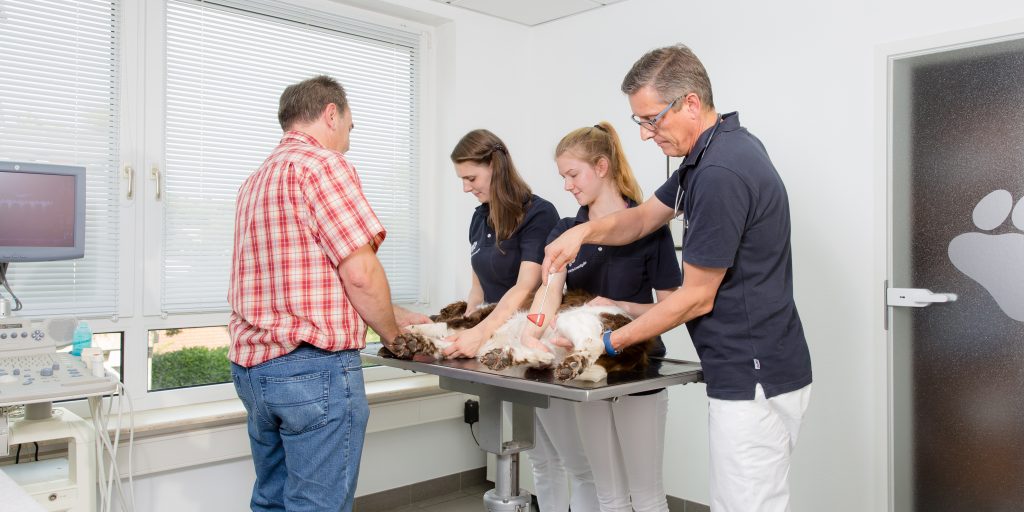<h1>PARALYSIS</h1>
Paralysis in animals – diverse manifestations require a thorough diagnosis
If an animal can only move with difficulty or not at all because it lacks the strength to do so, this is known as paralysis or flaccid paralysis. There is also spastic paralysis, in which the limbs are under high tension and are therefore unable to function.
We distinguish between paralysis of individual limbs, paralysis of the posterior half of the body (e.g. thoracic and lumbar spinal disc disease “dachshund paralysis”), paralysis of all four limbs (e.g. in polyneuropathies or polymyositis), paralysis of other organs (e.g. bladder or rectum). They can all trigger life-threatening clinical symptoms and require a rapid and thorough diagnostic work-up in order to provide targeted and rapid help.
The most important building blocks on the way to diagnosing paralysis are the medical history, for which we take a lot of time, and the neurological examination. Sometimes further examination procedures such as urine, blood and cerebrospinal fluid diagnostics are used. Ultrasound, X-rays, electrodiagnostics, computer tomography or magnetic resonance imaging are also examination procedures that may be necessary and are also recommended in such cases.
The causes of paralysis in animals are very varied, and clinical pictures that look the same can have different neurological causes. For this reason, one frequently occurring phenomenon, herniated discs, is discussed here as an example.
They affect not only small-breed dogs, but also large-breed dogs, young and old, and we have also seen herniated discs in rabbits. As a rule, herniated discs are very painful, which distinguishes them from spinal cord infarctions. In the case of herniated discs in the spinal canal, the spinal cord is pressed against the spinal canal as a soft mass, which leads to symptoms of paralysis, while the rupture of the disc ring causes pain.
Paralyzed animals should be treated surgically immediately, as this gives them the best chance of a full recovery. Conservative care of patients through strict rest can be attempted in mild cases without paralysis and is often successful. However, if the need for surgery is neurologically recognized, then no time should be lost, as delays in the decision for surgical intervention in such patients also means a prolonged healing phase, which can trigger unpleasant accompanying complications in paralyzed patients.

